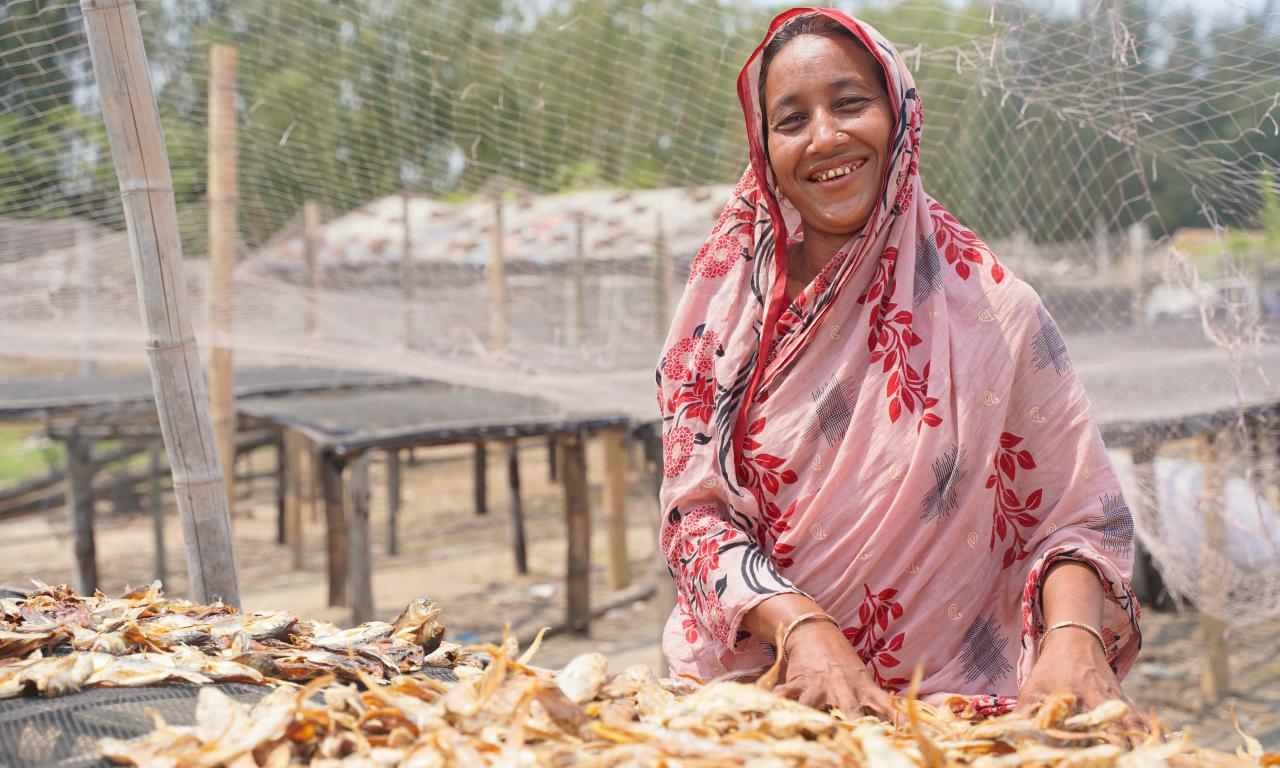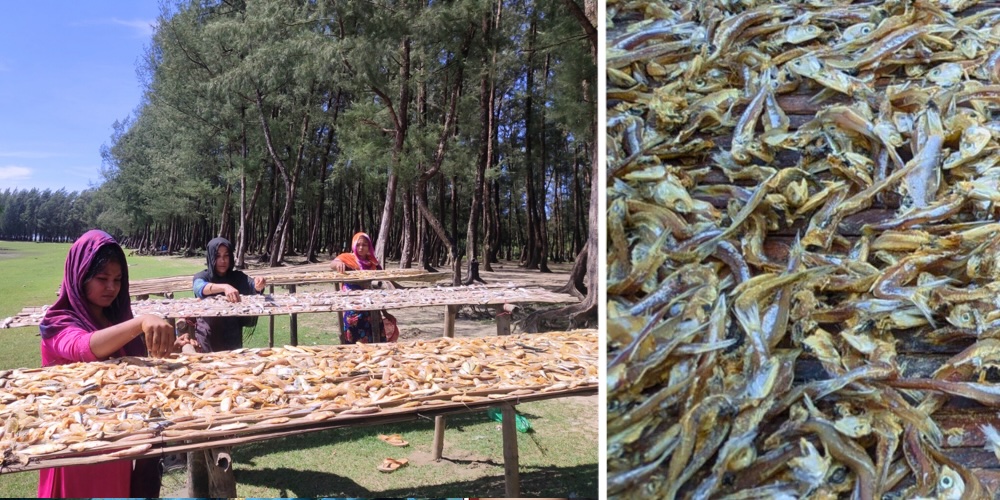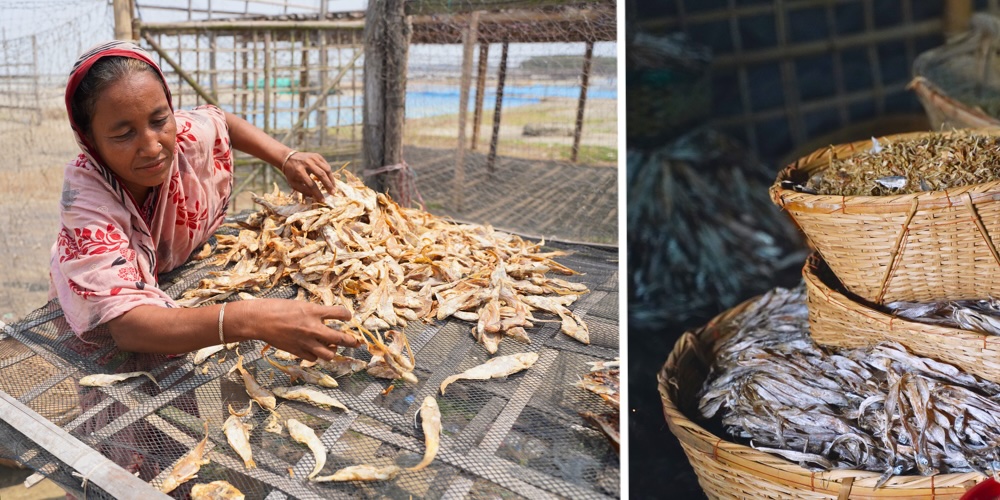
- Consuming 10 g of dried small fish powder could potentially fulfill the recommended nutrient intake for protein, calcium, selenium, and vitamin B12 among children aged 6-23 months.
- It serves as a significant source of these nutrients for pregnant and lactating women.
- Proper utilization of pelagic small fish could be an effective means to fight malnutrition.
Pelagic small marine fishes serve as rich sources of both essential macro- and micronutrients offering numerous health benefits from fetal life to adulthood. Their high nutritional content can meet the Recommended Nutrient Intake (RNI) for various essential nutrients.
Globally in 2022, 149 million children under 5 were estimated to be stunted, due to chronic undernutrition. In Bangladesh, 24% of children aged below 5 are stunted, 11% are wasted; and 22% are underweight. According to the World Bank, 37% of reproductive-aged women in Bangladesh have iron deficiency anemia. The National Micronutrient Survey (2019-20), found that 43% of women have zinc and 30%, have iodine deficiency. Women also suffer from deficiencies in folic acid, calcium, vitamin B12, and other micronutrients, collectively known as hidden hunger. Consequently, malnutrition is estimated to cost Bangladesh more than US$1bn every year in lost productivity and even more in health costs.
Marine fishes are rich in highly bioavailable nutrients that are beneficial to human health by enhancing neurodevelopment in the first 1000 days of life, improving cognitive and visual development in early childhood, and reducing adult risk of cardiovascular illnesses. Their micronutrients enable the body to produce enzymes, hormones and other substances that are essential for proper growth and development and to boost immunity.
A Practical Solution to Nutrient Deficiency
In Bangladesh, fish accounts for two-thirds of the total animal protein consumption. With a per capita daily intake of 62.6g, fish is the third-most consumed food covering approximately 60% of total annual animal protein intake. Therefore, a shift from the quantity to quality dietary intake is important to tackle the high malnutrition burden.
USAID’s Enhanced Coastal Fisheries in Bangladesh (ECOFISH II) led by WorldFish in collaboration with Noakhali Science and Technology University (NSTU), Bangladesh and Institute of Marine Research, Bergen, Norway, investigated the nutrient composition of fish powder intended for direct consumption, sourced from seven under-utilized small marine fish species indigenous to the Bay of Bengal, Bangladesh.
The study, recently published in Journal of Food Composition and Analysis, analyzed fish species known locqlly as chapila (Sardinella longiceps), chewa (Pseudapocryptes elongatus), faissa (Thryssa dussumieri), ichre (Spratelloides gracilis), loittya (Harpadon nehereus), mola (Escualosa thoracata), and olua (Coilia dussumieri) for their nutrition content.
The study focused on eight nutrients, protein, iron, zinc, calcium, selenium, iodine, vitamin B12, and DHA. For each nutrient, the fish species content was compared with the daily RNI for pregnant and lactating women (PLW), infants 6-11 months and children 12-23 months old.

Small marine fishes can be difficult for children to eat due to the presence of bones, but, introducing fish powder into meals could be a potential solution. Including fish-based products such as smashed fish, powdered fish, and fish chutney into the diet of children can address micronutrient deficiencies.
For children aged 6-23 months, consuming 10 grams of dried small marine fish powder, derived from the species analyzed, could potentially satisfy the RNI for protein, calcium, selenium, and vitamin B12, while also contributing to the RNI for other essential nutrients. This powder also acts as a significant nutrient source for pregnant and lactating women (PLW). However, for specific nutrients like zinc and iron, certain small fish species may be more suitable. For instance, olua powder is a promising choice for those with iron deficiency; a single 10-gram serving can meet 68%, 100%, 21%, and 42% of the iron requirements for children aged 6-11 months, 12-23 months, and pregnant and lactating mothers, respectively. In a similar vein, mola powder is recommended for those lacking zinc.

A Path Forward to Addressing Malnutrition
Pelagic small marine fish, which present high nutritional quality, are caught by small-scale artisanal fishers. They are affordable and easy to sun dry, making them easily accessible for low socioeconomic groups. These fish or their powders can be used in nutrition programs to enrich diets and address malnutrition.
Despite progress in socioeconomic and nutritional indicators in previous decades, malnutrition is still a big public health problem in Bangladesh. Marine fish, especially pelagic small fish, could potentially address common nutritional deficiencies in the country.
Currently, the Bangladeshi food composition table only includes values for three types of dried small fish, with values on important micronutrients lacking. The results of the study have the potential to be a useful supplement to the table, providing nutrition information of dried small fish from marine sources as an effective means of combating malnutrition. However, more marine fish should be analyzed to assess the nutritional quality and to enrich the literature in this regard.
Finally, based on the availability, accessibility, affordability, nutritional value, preference, usability, and cost-effectiveness, these low-cost but nutritious pelagic small marine fish could be useful to address common nutritional deficiencies in Bangladesh, if collected and utilized properly.
